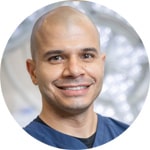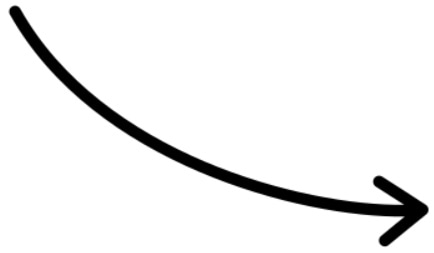If you’ve ever heard nicknames like “baby face” and “chipmunk cheeks,” it’s probably because the person in question has a notably round face. Yet even though the appearance of chubby cheeks is the result of fat under the skin, it isn’t the same kind of subcutaneous fat associated with obesity. Moreover, it isn’t even necessarily an indicator of being overweight at all. This kind of fat is called buccal fat, and it can’t be removed by normal weight loss methods.
Unlike other types of body fat, buccal fat (pronounced like “buckle”) is located exclusively in the cheeks in the area between the buccinator muscle and several other facial muscles. These masses are also known as buccal fat pads, and one of their functions is as deep tissue space fillers in the cheeks. The buccal fat pads also serve as gliding pads or cushions for some of the face muscles when chewing.
The amount of facial fat in the area often changes throughout a person’s life. This is perhaps best demonstrated by the chubby cheeks of an infant or young child. Though doctors don’t know the whole story behind buccal fat yet, it appears to be divided into three lobes: anterior, posterior, and intermediate. The intermediate lobe actually loses significant volume during the course of adolescence; the current understanding is that the excess fat is important for suckling as an infant but then decreases as the child grows.
Because buccal fat isn’t responsive to traditional weight loss methods like diet and exercise, removing it requires facial plastic surgery. It also can’t be removed by liposuction because the fat pads lie under muscles and nerves that could be damaged. Instead, buccal fat pad removal is accomplished by surgical extraction. Once the surgery is complete, the goal is to reduce fullness in the cheeks and create a more “chiseled” look for the jawline.
This kind of cheek reduction surgery is one of the quickest and least invasive types of cosmetic surgery available today. Small incisions are made on the inside of the mouth in order to access the buccal space; the incisions are purposefully made inside so that no visible scars are left. The surgeon then extracts the buccal fat through the incision and places sutures. The entire outpatient procedure typically takes 30 minutes and is done under twilight or local anesthesia.
Since buccal fat removal is a type of plastic surgery, aesthetic concerns are of course factored in more than in other types of surgery. In some patients, for instance, removing all of the buccal fat can actually result in too extreme of a reduction that gives a sunken or unnatural look. To avoid this, the surgeon contours the fat and removes just enough to get an aesthetically pleasing face shape.
The recovery from cheek reduction surgery is relatively quick; most patients only need 2-3 days of rest before they’re ready to resume their normal activities. During the first few days after the procedure, the doctor will provide an oral rinse that helps prevent infection. Additionally, a liquid diet is recommended for those early days to avoid irritating the sutures. Many people experience some swelling in the cheeks for up to a couple weeks, but it can be easily mitigated with ice packs.
The results of the surgery will begin to be noticeable as the swelling subsides, though it may take even longer for the final result to be apparent. In some cases, it can take up to three months. Although buccal fat can’t grow back, there are still many aspects of these deposits that aren’t currently understood. More research is needed about the long-term effects; some experts believe the surgery could cause premature aging and distortion in the face.
Buccal fat removal surgery has become a popular topic in certain circles, especially on social media. Plastic surgeons report seeing a significant uptick in interest in the surgery in the last few years. Indeed, young people in their early twenties sometimes inquire about the surgery out of a desire for a particular look, but most doctors try to dissuade them because of evidence that buccal fat decreases naturally as we age. In other words, a young person who has the surgery in their twenties might regret how it looks later on if the fat continues to diminish.
An ideal candidate, on the other hand, will have a natural and unmistakable fullness or roundness in the face. In many such cases, the buccal fat pads begin to drop down as the patient ages. For these patients, the natural fullness can droop and overemphasize the jowls. For each person, the plastic surgeon will evaluate the shape of the face and the location of the fat pads. Many surgeons won’t agree to remove the pads on a face that already has a somewhat hollow look, for example.
One of the main risks of the surgery that must be addressed is related to who is a good candidate. Removing too much from the cheeks of someone without genuinely substantial fat deposits can lead to undesired visual results. If too much is removed, it can be corrected through fat grafting. In this procedure, fat cells from another part of the patient’s body can be extracted and then reinjected into the buccal space.
As with any surgery, there are some potential risks and side effects with this cosmetic procedure. Compared to other types of surgery, however, buccal fat removal is relatively safe. Below are some known risks:
While the presence of buccal fat itself isn’t correlated with weight gain, it is possible for regular subcutaneous fat to build up in the face and neck. For patients in this scenario, buccal fat removal surgery will likely not make a significant visible difference. Even though it is a legitimate cosmetic surgical procedure for modifying facial features in the cheek area, it isn’t for everyone and may not provide the desired long-term results. A full or chubby face is sometimes simply a manifestation of obesity that highlights a need for change.
The truth is that tens of millions of people in the United States are overweight or obese, and the concern goes beyond aethetics; obesity is a major risk factor for a variety of negative health outcomes. If you have tried to lose weight in the past through diet and exercise without success, you’re not alone. At True You Weight Loss, we are passionate about offering non-surgical weight loss procedures that can help you lose weight and keep it off. If you would like to learn more, please contact us today to request a consultation.

Dr. Christopher McGowan, MD, a leader in endobariatrics, specializes in non-surgical obesity treatments and is triple-board-certified in Internal Medicine, Gastroenterology, and Obesity Medicine. Renowned for pioneering endoscopic sleeve gastroplasty (ESG) with over 2,000 procedures, his global influence and research contributions define him as a top expert.



